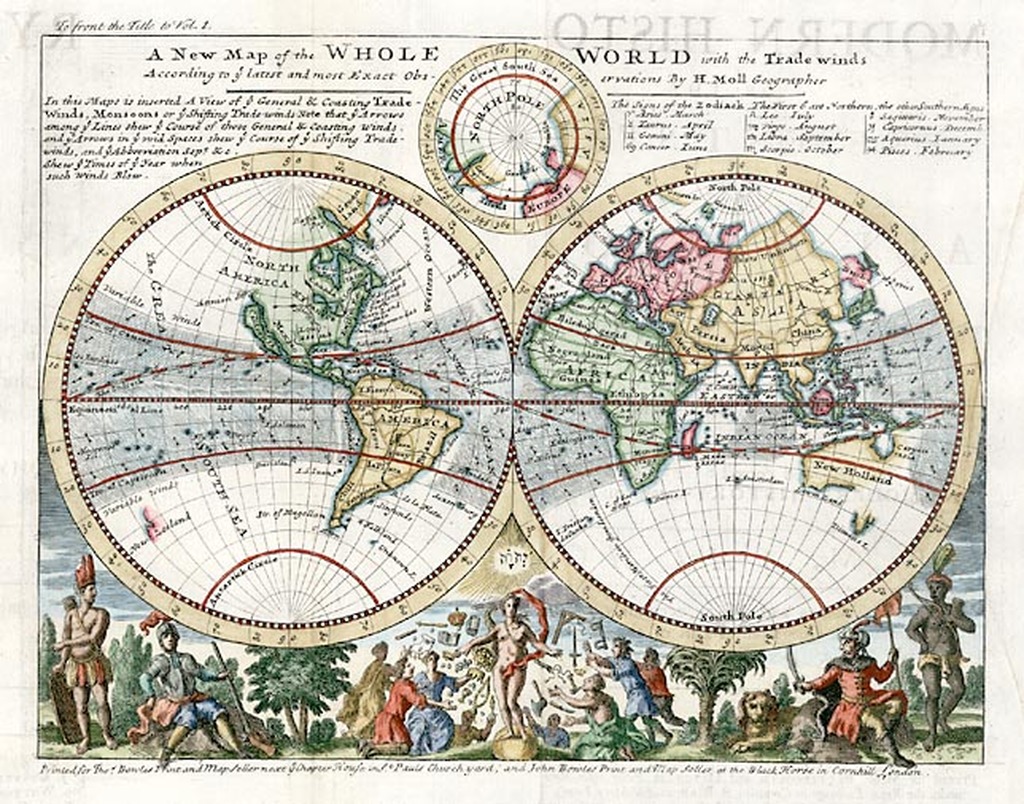In June 2019, candidate Joe Biden pledged to wealthy donors that ‘nothing would fundamentally change’ once he was elected. In Latin America at least, he is keeping that promise. The evidence so far suggests a continuity of policy objectives: promoting corporate profits, minimizing migration, maintaining alliances with repressive right-wing governments and marginalizing the left. But the Biden team intends to avoid the excesses of his predecessor, seen as ‘counterproductive’ in ruling circles.
The roster of appointees suggests a strong affinity with both the Clinton and Obama administrations. Most have passed through the revolving door once or twice, as their official bios and company websites boast. Secretary of State Antony Blinken’s resume includes top roles in Washington and at private equity firm Pine Island Capital Partners. Roberta Jacobson, the National Security Council’s new ‘coordinator for the southwestern border’, worked in Obama’s State Department before joining consulting firm Albright Stonebridge Group, where she helped corporations reach ‘new target markets’. Juan González, the pick for Senior Director for the Western Hemisphere at the NSC, also served in the Obama administration before being hired by the Cohen Group, where he helped to ‘accomplish client business objectives’ in Latin America. The choice for Assistant Secretary of State for Western Hemisphere Affairs, career diplomat Brian Nichols, has three decades of experience strengthening US ties with right-wing governments and ‘defending the rights of American investors’ in Peru, El Salvador, Mexico, Haiti and Colombia.
The public statements of these recent appointees give a flavour of the administration’s stance. Jacobson has praised NAFTA and expressed her relief that Trump’s NAFTA 2.0 preserves most of the original. González has meanwhile touted Biden’s pivotal role in the Clinton administration’s Plan Colombia, the programme that ultimately funnelled $7.5 billion to a regime dominated by far-right death-squads, bankrolling an assault on political opponents and human rights advocates. Thousands of civilians – and counting – were murdered as a result. (‘I was one of the architects of Plan Colombia’, Biden boasted to CNN in 2019.) He has also talked up the President’s support for pro-corporate deregulatory schemes like the Trans-Pacific Partnership, his commitment to the Pacific Alliance of rightist governments, and his past efforts at ‘increased border enforcement’ in the region.
In keeping with that record, Biden’s repudiation of Trump-era immigration policies has been much more limited than media fanfare would suggest. As Felipe De La Hoz has noted, while the executive orders on inauguration day ‘looked sweeping on the surface’, they actually kept in place many of the Trump administration’s ‘most consequential restrictions’. As a result, ‘immigrating to the United States from abroad remains functionally prohibited, and asylum seekers can be ejected from the country in as little as an hour.’ President Biden deported hundreds of people in just his first two weeks despite having the legal authority to avoid scheduling deportations. The new Biden immigration bill focuses mostly on granting legal status to migrants currently in the United States (most of them, anyway), and says little about those who will seek refuge here in years to come. Even raising the refugee ceiling to 125,000, as Biden promises to do by 2022, would leave it lower than it was under George H.W. Bush.
Biden’s pledge of $4 billion for addressing the ‘root causes of migration’ in Central America might sound positive, but there is a small problem: one of the major ‘root causes’ is US policy itself. US-funded military and police forces, which would receive some of Biden’s $4 billion, have contributed heavily to the violence that forces Latin Americans to flee. Meanwhile, NAFTA-style neoliberalism has amplified economic misery. By eroding social supports and state capacities, it has made the region extremely vulnerable to Covid-19, which has so far killed almost 700,000 Latin Americans and driven tens of millions more into poverty. The devastation of the pandemic has been further intensified by US zeal for ‘intellectual property rights’, which amount to private monopolies for taxpayer-subsidized drug companies. The US’s protection of those monopolies has long inhibited access to medicines in Latin America, including Covid-19 vaccines. Policies like these often cancel out any positive impact of US aid programmes.
In Honduras, for example, the Obama administration’s support for the 2009 military overthrow of a mildly progressive president inaugurated the human rights nightmare that persists today. Hundreds of peasants, Indigenous activists and environmentalists have been murdered. The coup regime also instituted economic reforms that increased poverty and inequality, both of which were previously trending downward. Addressing the ‘root causes’ of migration in a place like Honduras would require a fundamental reorientation of US foreign policy. Even then, the lasting impacts of hurricanes Eta and Iota – along with other capitalist climate disasters – could only be assuaged through long-term reparations, including a far more welcoming approach to refugee resettlement. So far, the signs from Biden’s team are not very encouraging.
Biden has embraced the other right-wing regimes supported by previous US presidents. When Brazil’s center-left leader Dilma Rousseff was ousted in 2016 based on farcical allegations of fiscal misconduct, the Obama administration welcomed her overthrow as ‘a decision made by the Brazilian people’. Rousseff’s removal brought the radical right to power, with devastating consequences for workers, Indigenous groups, the LGBTQ population, Black people and the environment. Biden has pledged continuity with the Obama-Trump policy. On 8 February White House press secretary Jen Psaki remarked that ‘we are by far the largest investor in Brazil’ and will ‘continue to strengthen our economic ties’. A similar policy is being applied in Haiti, where Biden has backed pro-corporate autocrat Jovenel Moïse’s refusal to leave the presidency after his term expired on 7 February.
The complement to these right-wing alliances will be continued US subversion in Cuba, Venezuela and Bolivia. On Cuba, González advocates a return to the ‘Obama doctrine’, which reopened diplomatic channels and travel in the hope of undermining the government. In contrast to Trump’s brash refusal to engage, he calls for ‘a policy of subversion by engagement’. The administration must ‘play the long game with Cuba’, in the words of former Clinton NSC official Richard Feinberg. This means ‘stitching Cuba to the fabric of the global economy’ via admission to the World Bank and International Monetary Fund. Supporting ‘private entrepreneurship’ will ‘gradually erode the foundations of communism’, pushing the country toward ‘a more market-friendly version of socialism’ and eventually back into the capitalist model. Such changes will also tame Cuba’s foreign policy, restoring the island’s subordinate role in the ‘system of collaborating neighbour states in the Western Hemisphere, where the United States is the natural leader’. Early signs suggest this approach will hold sway. The Biden administration’s line is that ‘Americans, especially Cuban Americans, are the best ambassadors for freedom in Cuba’, a curious assertion given the history of US and Cuban–American terrorism against the island. There is no indication that Biden will seek to end the embargo’s six-decade-long collective punishment of Cubans, though he may carve out more exemptions for influential US businesses.
Subversion in Venezuela, by contrast, might not require as much ‘engagement’. In Cuba the government is stable and the opposition isolated. In Venezuela, by contrast, the Maduro government faces a deep economic crisis (dramatically and intentionally exacerbated by US sanctions) and major public discontent. Betting on Maduro’s vulnerability, Biden continues to recognize the self-appointed ‘president’ Juan Guaidó. Under Obama, Biden courted Guaidó ally Leopoldo López – a so-called political prisoner arrested for inciting violent protests that killed dozens of people – who is now calling for Biden to lead a renewed international effort to topple Maduro. US support for the far-right forces of Guaidó and López is intended to prevent a deal between Maduro and the more pragmatic elements of the opposition. Such a deal might alleviate Venezuela’s economic crisis, but it could leave Maduro in power and thus derail the US’s regime change agenda.
In late 2018 Biden complained that Trump’s ‘intensified sanctions on Venezuela have been clouded by sabre-rattling’ and ‘clunky sloganeering’. At that time, those intensified sanctions had already killed an estimated 40,000 civilians, with an unknown number of additional deaths after Trump imposed harsher measures in 2019. But the goal of regime change had not succeeded. Trump’s crime in Venezuela was not his lethal denial of food and medicine to the population, but rather his ‘faulty execution’ of the policy. This critique informs Biden’s current roadmap for Venezuela, which hinges on refining the sanctions to inflict maximum political damage. Secretary Blinken argues that sanctions must be honed ‘so that regime enablers really feel the pain’, while González favours a ‘smart’ use of ‘multilateral sanctions’ over Trump’s go-it-alone programme.
Any modifications to Latin America policy under Biden will stem from two sources. One is the feeling that Trump’s cavalier approach threatened corporate profits and imperilled US geopolitical control. Bipartisan voices have argued that the unilateral economic war on Venezuela jeopardizes both aims. As Bloomberg Businessweek recently warned, ‘US sanctions have now become so sprawling and complicated that they’re more difficult to enforce or manage without risking serious impact on the American economy’. The closure of foreign markets and heavy ‘industry exposure’ to legal penalties is simply not good for business. There is also consternation that ‘the overuse of financial sanctions’ and their unilateral application may ‘undermine the dollar’s primacy’ as the global reserve currency, which acts as an enormous subsidy to US business. The Biden administration will therefore likely grant industry’s demands for a relaxation of some of the sanctions. For the same reason it may pursue a new round of pro-corporate investment deals including the old Trans-Pacific Partnership. Such agreements benefit corporations while also strengthening alliances with pro-US governments. For Biden, one of Trump’s greatest sins was his ‘disengagement’ from those alliances, which forfeited the chance ‘to galvanize a regional agenda that corresponds with US interests’.
A second source of policy change will be domestic political pressures. So far, the left has exerted some influence on Biden in two areas relevant to Latin America: immigration and climate policy. In each case, popular pressures have dovetailed with the interests of elite sectors that stand to benefit from a policy shift. Relaxation of the most vicious anti-immigrant policies will be a response both to the immigrant rights movement and to the companies who require a steady stream of migrant labour to ‘meet their critical workforce needs’, as recently advocated by the Chamber of Commerce.
US climate policy has urgent implications for Latin American and Caribbean countries, which are paying for rich countries’ emissions in the form of droughts, floods, and hurricanes. Biden’s initial gestures on climate have been somewhat better than his past record would suggest, reflecting both the growth of the climate movement and a new interest among elites in confronting the emergency. This elite constituency includes multinational capitalists plus US military and diplomatic officials. These groups are anxious to reestablish ‘credibility’ with international allies, and fearful that climatic destabilization will lead to ‘global exoduses prompted by rising temperatures’ as well as other outcomes that would endanger the arrangements upon which US global dominance depends. Whether Biden’s climate policy brings major changes or just minor revisions will depend on the extent to which these elite interests demand real emission reductions, and on the ability of the climate movement to increase its capacity for disruption.
Minor revisions aren’t always trivial: admitting a few more refugees and taking some climate action will have positive impact on people’s lives. Unruly popular movements may force bigger changes to policy. Yet given the magnitude of the destruction that US governments have visited on Latin America and the Caribbean, what stands out is the vast gulf between what Biden is likely to do and what is owed to the people of the region, who deserve far more than just a smarter empire.
Read on: Juan Carlos Monedero, ‘Snipers in the Kitchen’, NLR 120.









